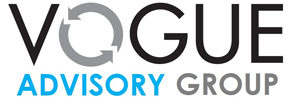Introduction
Last year, Australia’s frenzied buying and selling on the property market accumulated a third of Australia’s economy, with an outstanding $688.7 billion spent on houses. So, the question is, is there an impending rate rise?
It was escalated by more than 20 per cent in some parts of the country, rising at its fastest rate in three decades. Data demonstrated a 57 per cent increase in housing settlements, equalling one-third of Australia’s $2 trillion economies.
The data from conveyancing platform PEXA showed property transactions surged to greater than 834,000 last year in NSW, QLD, Victoria, WA and SA, an increase of 38 per cent compared to 2020.
Soaring property prices have caused the Australian market to reach $9 trillion. However, this has also spotlighted housing affordability and younger generations ostracised out of buying.
While there have been predictions that the property market will experience a severe drop from midway through this year, with 2023 house prices predicted to plunge by a whopping 11 per cent, according to a NAB, other experts aren’t so sure.
Mortgage rate rise
Australia’s central banks are hiking their fixed-term mortgage rates in response to concerns about surging inflation in the US. So, anyone pursuing a three-year fixed home loan with a Big Four bank will pay at least 2.89 per cent at present. Anyone intending to fix their loan for four years will have to pay a minimum of 3.19 per cent.
It is all determined by what’s happening in international bond markets.
Because fixed loans require a bank to charge borrowers the same interest rate over a given period, the funding they must access to offer this product must cost them the same amount over time, too. As a result, banks source the money they lend to fixed-rate borrowers from international bond markets instead of short-term cash markets where the cost of funding is volatile.
Banks issue one to five year bonds to investors, who demand a set interest rate over that time frame. What is happening worldwide affects how much people pay for their mortgage in Australia.
Despite the banks putting up their fixed-term rates in recent months, “the short end hasn’t moved at all,” Mr Conheady said.
That is because the Reserve Bank is telling the world that short-term rates will stay at rock-bottom levels until at least 2023.
RBA impending interest rate rise
The Reserve Bank is under pressure to increase interest rates this year following higher than expected inflation data and a substantial improvement in unemployment, despite previously saying the outlook was for rates to remain at record lows until 2024.
The Reserve Bank of Australia has disclosed massive monetary policy changes and signalled interest rates. Reserve Bank governor Philip Lowe urges new homeowners to build in a buffer to withstand any increase in mortgage repayments as the economy recovers from the COVID-19 recession.
Surging inflation and a better-than-expected improvement in the jobs market ignited expectations that the RBA would join other central banks in rewinding vast levels of financial support, lest the forces currently roiling financial markets get out of control.
Reserve Bank of Australia governor Philip Lowe claims the central bank remaining reserved before lifting interest rates amidst growing expectations of a hike this year.
At Tuesday’s first meeting for 2022, the RBA board left the official cash rate at a record low of 0.1%.
While financial markets and several economists are forecasting a rate rise this year, Mr Lowe made it clear that the RBA is not ready to make a move.
Several economists have predicted a rate increase as soon as August. At the same time, financial markets are forecasting an increase as early as May, after stronger-than-expected jobs and inflation data.
While official interest rates remain stagnant, banks have lifted fixed mortgage rates in recent months. ABS data released recently showed new home loans rose 4.4% to a record high of $32.8 billion in December, driven by the second consecutive monthly rise in owner-occupier lending. RBA data recently released showed housing credit grew by 0.7% in December, with the annual rate rising to 7.4%, the most robust annual pace in six years.
The housing interest rate impact on the property market
When interest rates are low, prospective home buyers are encouraged to enter the market. In addition, since obtaining home finance is more affordable, those who may have been on the fence regarding purchasing property in Australia are more likely to undertake a home loan and purchase real estate.
Sequentially, this increase in demand for property leads to rising property values as inventory is acquired and homes become more challenging to obtain.
Certainly, the contrary is also verifiable. When interest rates are high, consumers can be less inclined to take out the mortgages they need to enter the property market. With fewer people looking to buy, real estate value stagnates or declines.
Interest rates are a significant factor in property cycles, and for that reason, potential home buyers need to keep an eye on where interest rates are and where they may be heading.
Homebuyers could face higher mortgage repayments as early as June as financial markets and economists warn that an expeditious run-up in inflation could compel the Reserve Bank to increase official rates above 2 per cent within 12 months.
In a development that encourages growing federal concerns about cost-of-living pressures before an election due by May, the Commonwealth Bank (the nation’s biggest lender) expressed its belief that the RBA would have to begin to increase interest rates by the middle of the year.
Even a 1 per cent rise could add hundreds of dollars a month in repayments on the average new mortgage.
RBA interest rate rise impact on the market
Unlike most goods and services, the only way most people can buy a house or apartment is through debt.
Interest rates and regulations have been the main swing factor in how much you can borrow throughout recent years.
Despite some contrasting arguments, most economists and real estate analysts now agree that how much you can borrow is the critical determinant of how much you will pay for housing.
As potential buyers are priced out of those properties, the compromise they make on size, quality or location, and so booms generally spread outwards, beginning at the market’s premium end.
Interest rates also play a specific role in valuing assets for economically rational players.
When you buy a house, you’re purchasing a future rental income as an investor. As an owner-occupier, you are purchasing the savings from not paying rent.
Both have to be compared to the interest payments you will need to make on your debt, depending on the sale price and interest rate. The lower the predicted long term interest rate, the higher the purchase price it’s financially rational to pay.
This is not the first boom prompted by falling interest rates, and it certainly won’t be the first to be ended by rising rates or regulatory limits on borrowing.
Earlier than expected, interest rate rises seem unlikely to hit the housing market dramatically. However, economists and housing analysts say affordability will continue to be a concern in Sydney and Melbourne.
Soaring house prices are predicted to stall across Australia by May and even drop by the end of December, according to Westpac, before a dramatic decrease in the coming years.
However, from the three months to February, the Westpac Housing Pulse reports showed that the Australian housing market rose by 2.5 per cent, while property sold in Sydney and Melbourne are still well above long term averages.
Experts say that an early interest rate spike would accelerate the slowdown in the property market and instigate house price decreases by the end of the year.
Historically, there has been a delay between the impact of interest rate increases on the property market. However, the effect will be felt by agents, sellers and buyers earlier this time around.
Property data firm CoreLogic investigated the correlation between Australia’s property prices and interest rates, discovering that it could be 12 moonths before a change in rates puts pressure on prices downwards.
The earlier-than-expected rate increases may prompt homeowners to fix their mortgage rate, even at the current higher level, said Peter Munckton, Virgin Money Australia’s chief economist.
While many have forecast that a hike in the cash rate will blunt the growth of house prices, very few are saying there will be any retreat from current values.
Whilst August is firming as the most likely month for the Reserve Bank of Australia to increase interest rates, a much more critical issue is the potential rise in borrowing costs go over the next several years.
The result will determine more than just the financial squeeze on households indebted.
The peak interest rate will impact asset valuations for shares returns and housing for bank depositors and have implications for salaries, productivity and government debt resiliance.
It is a pertinant issue, especially in light of new figures from the Commonwealth Bank of Australia revealing about $500 billion of fixed-rate mortgages are due to reset across the banks throughout the next two years.
The present average fixed rate varying beweent 2.25 per cent and 2.5 per cent could potentially double to nearly 4 per cent as the home loans are refinanced.
Considering the exorbanent levels of mortgage debt and theb susceptibility of borrowers to interest rate fluctuation, CBA’s economist Gareth Aird predicts the RBA’s cash rate will apex at just 1.25 per cent in early 2023.
RBA governor Philip Lowe anticipate the cash rate can incrementally move higher to at least 2.5 per cent, but he is unsure.
Worryingly, persistent negative actual interest rates would erode the post-inflation returns of bank depositors.
Suppose productivity growth and real wages rise healthily over coming years. In that case, the nominal cash rate could reach about 3.5 per cent (assuming labour productivity growth of about 1 per cent), inferring a real interest rate of 1 per cent.
Additionaly, there are implications for superannuation fund members and asset managers regarding their fixed income and equity allocations and how much conservatism or risk they tak to achieve returns.
So, although permanently low nominal rates may sound appealing, persistent negative actual rates would be a big problem for Treasurer Josh Frydenberg or shadow treasurer Jim Chalmers after the election.
Vogue Advisory Group – here to help our clients during a changing market
When interest rates aproach historic lows for long periods, it ccan be easy to forget that what decreases will eventually increase. Rates will typically start to rise as an economy rebounds.
It is time to begin preparing for this shift in the interest rate environment, and we are here to help you. Please contact us if you have any queries or need advice.

